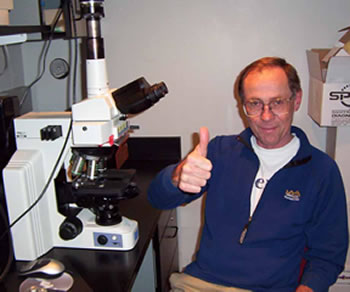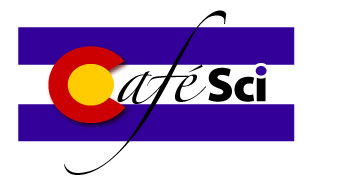About the topic
Bio
Get the Flyer
About the topic
During the mid-19th century, Charles Darwin, Ernst Haeckel, and others compiled elaborate evolutionary trees based on what organisms looked like and how they grew. Obviously, they did not include microbial life in any meaningful way, since they had no resemblance to animals and plants.
When sequencing of RNA and DNA became possible, organisms could be grouped on the basis of their genetic relatedness, regardless of appearance. And the surprises began. We animals are eukaryotes, and so are plants; we have a membrane around our cell’s nucleus. The molecular results showed that the major organelles of eukaryotic cells: mitochondria (that make energy for animal cells) and chloroplasts (that do the same, by photosynthesis, for plants), are bacterial in origin. Our cells have ancient visitors that became passengers!
 Then it was shown, by sequencing certain RNAs from organisms as diverse as humans, plants, fungi, bacteria, and microbes from hot springs and sea-floor vents, that life did not consist of just prokaryotes (bacteria) and eukaryotes, as has been taught for decades. In fact the concept “prokaryote” which implies a primitive precursor of us sophisticated eukaryotes is wrong; and Norm Pace has been the leading proponent for changing the way we think about the millions of organisms we share the world with.
Then it was shown, by sequencing certain RNAs from organisms as diverse as humans, plants, fungi, bacteria, and microbes from hot springs and sea-floor vents, that life did not consist of just prokaryotes (bacteria) and eukaryotes, as has been taught for decades. In fact the concept “prokaryote” which implies a primitive precursor of us sophisticated eukaryotes is wrong; and Norm Pace has been the leading proponent for changing the way we think about the millions of organisms we share the world with.
Fundamentally, there are three phylogenetic kinds of organisms, representative of the three primary domains of life: bacteria, archaea, and eucarya. Moreover, none of those primary domains is derived from another, but they all have a single common origin. Us eucarya are closer to the strange archaea than to bacteria, but we hardly know anything about the vast diversity of microbes, most of which have never been, and may never be, cultured and studied in the laboratory. So far, we are barely scratching
the surface of an enormous extent of biological diversity throughout the environment. How extensive is the fund of biodiversity from which we can draw useful lessons and resources? Can we use the distribution of microbes as a biosensor array to map and monitor the chemistries of Planet Earth? Are there deeper branchings in the tree of life than the lineages we know?
In addition to pondering these huge issues, Norm Pace and his group at CU examine the microbiology of the human environment. “We are looking at the microbiology of air and water in homes, schools, and public buildings. The microbial community in these environments is largely unknown - earlier studies depended on culture, which only identifies about 1% of the organisms in any given environment.” This study entailed sampling the microbial life in showerheads at 45 sites in the U.S.. Major sampling campaigns were conducted in New York and Denver metropolitan areas. Several sites were sampled on multiple occasions to test the changes in microbial communities over time. DNA was used to identify the microbial communities. And boy, folks, did they find some bugs.
Is it dangerous to take a shower? You’ll have to come to the Café to find out.
Some online sources for Norm Pace's work:
An essay in Nature describing his anti-prokaryote argument: Click here (pdf).
Click here to go to Norm Pace's lab site, from which you can link to a great PowerPoint show ("Abbott-ASM Talk") and see how one collects some of the bugs he'll talk about.
"The Encyclopedia of Life is a global partnership between the scientific community and the general public that aims to collect, and make freely available, knowledge about all the world's organisms." See how you think they are doing.
Bio
 Norman Pace received a B.A. from Indiana University and a Ph.D. from the University of Illinois, Urbana-Champaign. He has held faculty positions at the University of Colorado (1969-1984, 1999-present), Indiana University (1984-1996), and the University of California, Berkeley (1996-1999). Pace has published over 250 research articles in journals such as Science, Nature, and the Proceedings of the National Academy of Science. He is a fellow of the American Association for the Advancement of Science, the American Academy of Arts and Sciences, and the American Academy of Microbiology, and a member of the National Academy of Science.
He is a member of the Editorial Board of Environmental Microbiology and RNA, the Journal of The RNA Society. He sits on numerous advisory panels including the Board of Scientific Counselors, National Center for Biotechnology Information, National Library of Medicine;
the Board of Directors, Monterey Bay Aquarium Research Institute (MBARI); and the
NRC/Space Studies Board Committee on Origin and Evolution of Life.
In 1997, he received the Bicking Award from the National Speleological Society. In 2001 he was made a Fellow of the John D. and Catherine T. MacArthur Foundation. Recently he has received the Abbott-American Society for Microbiology Lifetime Achievement Award,
the RNA Society’s Lifetime Achievement Award, and the International Society of Microbial Ecology Tiedje Award for Lifetime Achievement.
Norman Pace received a B.A. from Indiana University and a Ph.D. from the University of Illinois, Urbana-Champaign. He has held faculty positions at the University of Colorado (1969-1984, 1999-present), Indiana University (1984-1996), and the University of California, Berkeley (1996-1999). Pace has published over 250 research articles in journals such as Science, Nature, and the Proceedings of the National Academy of Science. He is a fellow of the American Association for the Advancement of Science, the American Academy of Arts and Sciences, and the American Academy of Microbiology, and a member of the National Academy of Science.
He is a member of the Editorial Board of Environmental Microbiology and RNA, the Journal of The RNA Society. He sits on numerous advisory panels including the Board of Scientific Counselors, National Center for Biotechnology Information, National Library of Medicine;
the Board of Directors, Monterey Bay Aquarium Research Institute (MBARI); and the
NRC/Space Studies Board Committee on Origin and Evolution of Life.
In 1997, he received the Bicking Award from the National Speleological Society. In 2001 he was made a Fellow of the John D. and Catherine T. MacArthur Foundation. Recently he has received the Abbott-American Society for Microbiology Lifetime Achievement Award,
the RNA Society’s Lifetime Achievement Award, and the International Society of Microbial Ecology Tiedje Award for Lifetime Achievement.
The Pace Lab projects fall in to two large categories: "P" and "Search." "P" people study RNaseP, a catalytic RNA that functions in the conversion of pre-tRNA to functional tRNA (transfer RNA species that help assemble amino acids into proteins), and its associated proteins through biochemical and biophysical methods. "Search" researchers use molecular methods such as cloning and sequencing to detect microorganisms in various environments. Some of these studies focus on the microbial basis of many diseases including Crohn's Disease, Tuberculosis, and Cystic Fibrosis. Others identify microbes by novel methods: Most microbes in the environment are unculturable. As a result, these projects use non-culture-based methods to detect organisms in environments as varied as buildings, hot springs, anoxic microbial mats, and others.
